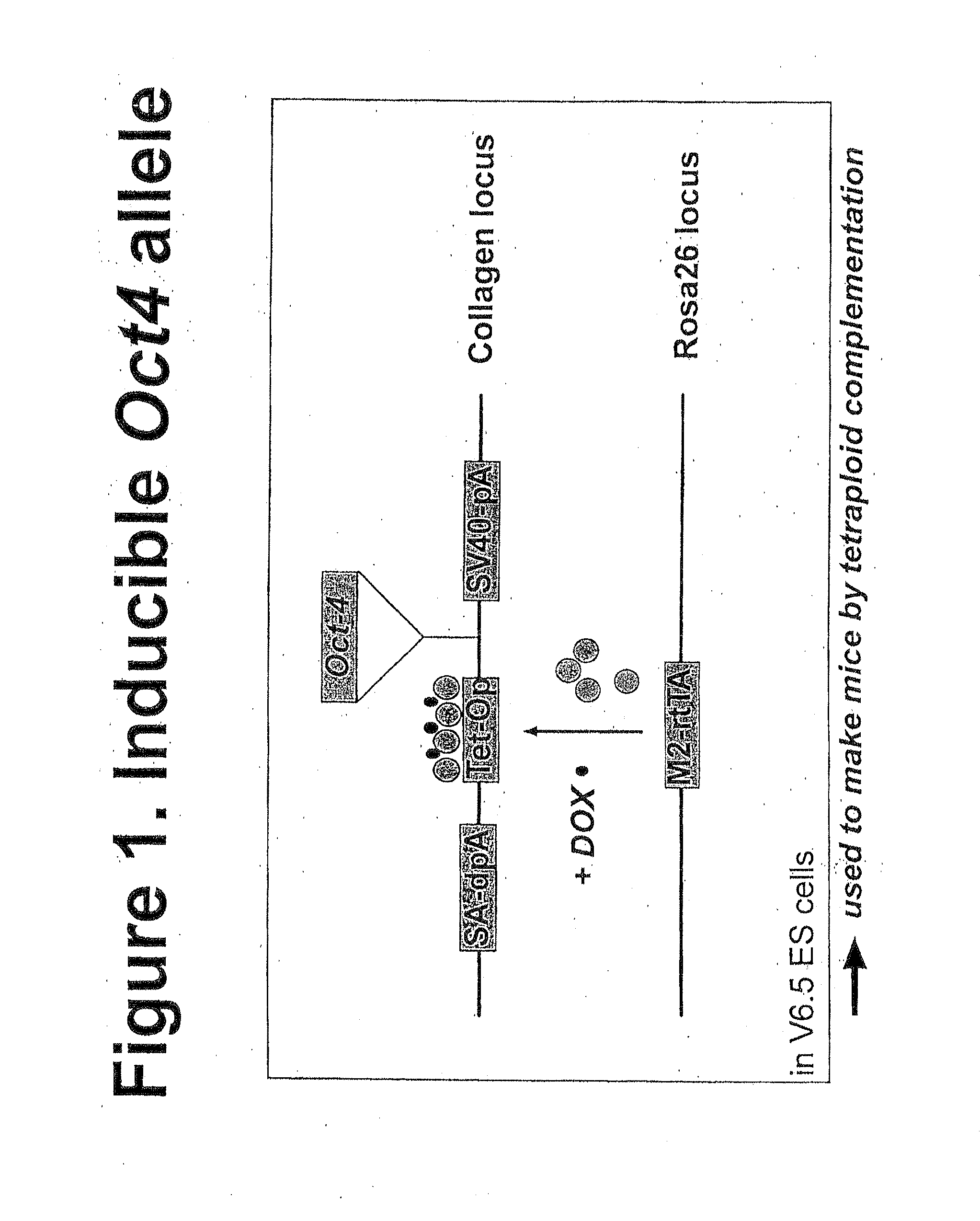Methods for reprogramming somatic cells
a somatic cell and reprogramming technology, applied in the field of reprogramming somatic cells, can solve the problems of slowing down the study of such cells and their application, and substantial risks of immune rejection
- Summary
- Abstract
- Description
- Claims
- Application Information
AI Technical Summary
Benefits of technology
Problems solved by technology
Method used
Image
Examples
example
Oct4-Induced Fibroblasts are More Susceptible to Reprogramming than Unduced Fibroblasts as Demonstrated by Nuclear Transfer Experiment
A. Generation of Transgenic Mouse Carrying an Inducible Oct4 Transgene
[0098]An inducible Oct4 allele is constructed as the following: first, two integration vectors are constructed. The first integration vector, inducible Oct4 integration vector, contains an Oct4 gene driven by a tetracycline-inducible promoter (Tet-Op). The Tet-Op-Oct4 cassette is flanked by a splice-acceptor double poly-A signal (SA-dpA) at its 5′ end and a SV40 polyA tail (SV40-pA) at its 3′ end. The second integration vector, tetracycline activator integration vector, contains a mutant form of tetracycline activator, M2-rtTA, which is more responsive to doxycycline (Dox) induction than the wild type activator. (Urlinger S. et al., 2000)
[0099]The two integration vectors are introduced into V6.5 ES cells: the inducible Oct4 integration vector and the tetracycline activator integrati...
PUM
 Login to View More
Login to View More Abstract
Description
Claims
Application Information
 Login to View More
Login to View More - R&D
- Intellectual Property
- Life Sciences
- Materials
- Tech Scout
- Unparalleled Data Quality
- Higher Quality Content
- 60% Fewer Hallucinations
Browse by: Latest US Patents, China's latest patents, Technical Efficacy Thesaurus, Application Domain, Technology Topic, Popular Technical Reports.
© 2025 PatSnap. All rights reserved.Legal|Privacy policy|Modern Slavery Act Transparency Statement|Sitemap|About US| Contact US: help@patsnap.com


